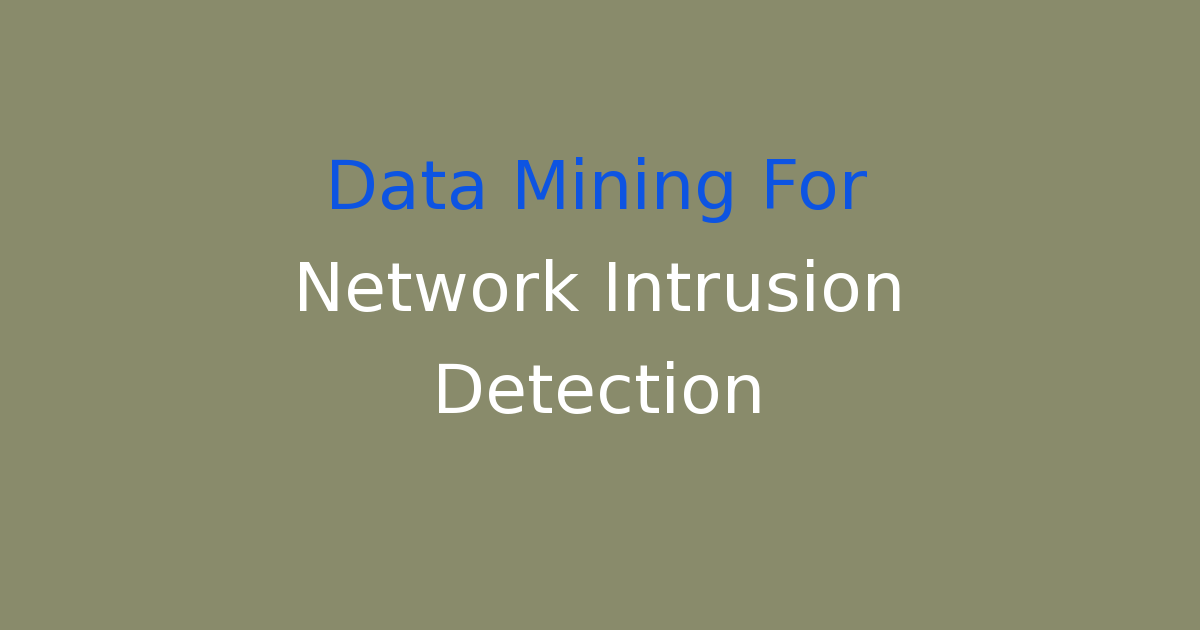Utilizing data mining techniques to identify and prevent potential network intrusions.
Introduction
Data mining is a crucial technique for network intrusion detection, which helps in identifying and preventing unauthorized access to computer systems. With the rise of cyber threats and attacks, it has become essential for organizations to deploy effective intrusion detection systems to protect their networks and sensitive data.
Problem Statement
The existing network intrusion detection systems may not always be efficient in detecting sophisticated and evolving cyber threats. Traditional methods rely on predefined rules and signatures to identify suspicious activities, which may not be effective in detecting zero-day attacks and advanced persistent threats. This poses a significant challenge for organizations in securing their networks from potential cyber threats.
Existing System
The existing network intrusion detection systems use rule-based or signature-based methods to detect anomalies in network traffic. These systems analyze network packets, logs, and other data sources to identify patterns of malicious behavior. However, these systems may not always be successful in detecting new and unknown threats, as they rely on predefined rules and signatures.
Disadvantages
One of the main disadvantages of the existing network intrusion detection systems is their limited ability to detect zero-day attacks and advanced persistent threats. These systems may not be able to keep pace with the rapidly evolving threat landscape, making them vulnerable to new and sophisticated cyber attacks. Additionally, these systems may generate a high number of false positives, which can overwhelm security teams and lead to alert fatigue.
Proposed System
Our proposed system aims to overcome the limitations of the existing network intrusion detection systems by leveraging data mining techniques. We plan to employ machine learning algorithms to analyze network data and detect anomalies in real-time. This approach will allow us to identify new and emerging threats, without relying on predefined rules and signatures.
Advantages
The proposed system offers several advantages over the existing network intrusion detection systems. By using data mining techniques, we can improve the accuracy and efficiency of threat detection. Machine learning algorithms can adapt to changing threat landscapes and learn from past incidents to enhance the detection capabilities. Additionally, our system can reduce false positives and provide security teams with actionable insights to respond to potential threats effectively.
Features
Some of the key features of our proposed system include:
- Real-time threat detection: Our system can analyze network data in real-time and detect anomalies as they occur.
- Machine learning algorithms: We will leverage machine learning algorithms to identify patterns of malicious behavior and detect emerging threats.
- Scalability: Our system is designed to scale with the growing volume of network data, making it suitable for large organizations and networks.
- Customizable alerts: Security teams can customize alert thresholds and receive notifications for potential threats based on their specific requirements.
Conclusion
In conclusion, data mining is a powerful tool for enhancing network intrusion detection capabilities. By incorporating machine learning algorithms into our system, we can improve the accuracy, efficiency, and scalability of threat detection. Our proposed system offers numerous advantages over the existing rule-based and signature-based methods, making it a valuable addition to organizations seeking to strengthen their network security. With the ever-increasing sophistication of cyber threats, it is imperative for organizations to adopt advanced intrusion detection systems that can keep pace with the evolving threat landscape. We believe that our proposed system has the potential to significantly enhance network security and protect organizations from a wide range of cyber threats.

